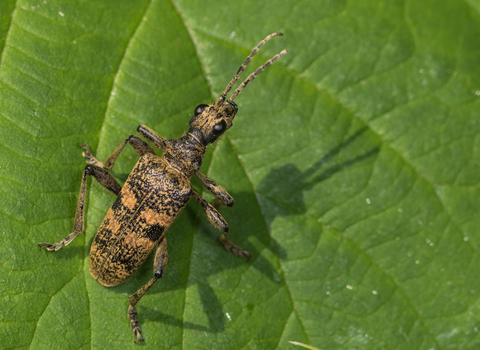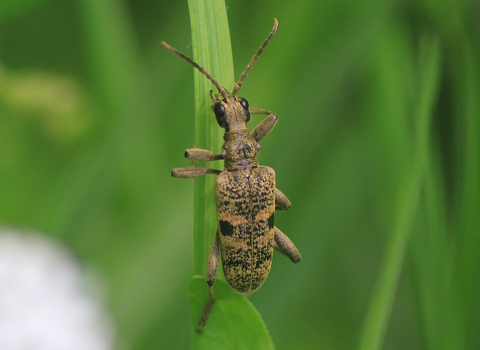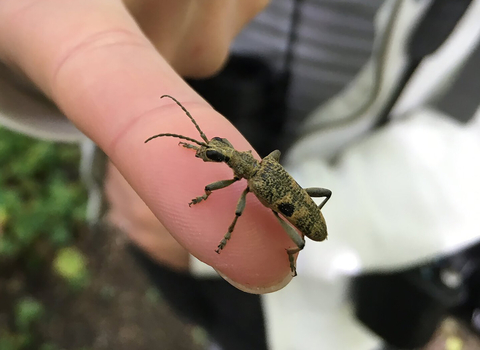
Black-spotted longhorn beetle © Brian Eversham

Black-spotted longhorn beetle © Tom Hibbert

Black-spotted longhorn beetle © Tom Hibbert
Black-spotted longhorn beetle
These bulky beetles can sometimes be found on flowers in woodland rides or along hedgerows.
